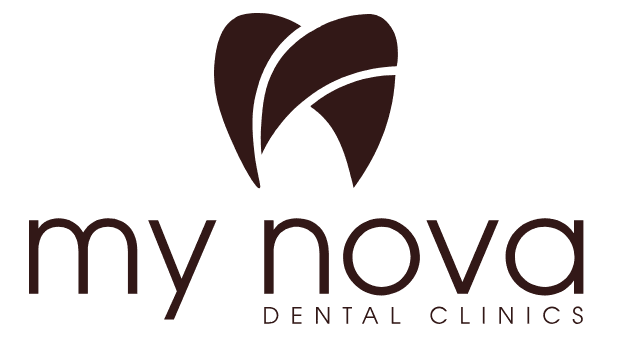TOOTH EXTRACTION
Nowadays, tooth extraction indications are quite limited due to the principle of preserving teeth as much as possible in parallel with holistic and technological developments. However, teeth with severely damaged surrounding tissues, advanced decay, or trauma that cannot be treated must be extracted in consideration of patient health.
Situations Requiring Tooth Extraction
- Teeth that cannot be treated due to excessive material loss
- Teeth with untreated infection around the tooth despite root canal treatment
- Teeth broken beyond repair due to trauma
- Excessive bone loss in supporting tissues not responding to treatment
- Teeth located in jaw fracture lines
- Teeth associated with cysts, tumors, or other pathologies
- Teeth mechanically damaged by restorative procedures
- Root remnants in the mouth with no function
- Teeth that interfere with prosthetic treatment planning (tilted or rotated teeth)
- Supernumerary or ectopic teeth
- Teeth that are loose or potentially infected due to trauma
- Impacted teeth
- Teeth may be extracted for orthodontic purposes to create space.
Pre-Extraction Requirements
- Inform your dentist about existing systemic diseases, allergies (antibiotics, local anesthetics, etc.), and all medications you use before the procedure.
- If your dentist has prescribed medication (e.g., antibiotics), use it exactly as recommended.
- If you experienced any problems in previous extractions (allergic reactions, fainting, extreme anxiety, etc.), inform your dentist.
- Have a light snack a few hours before the session unless your dentist advises otherwise; do not come on an empty stomach.
- Brush your teeth thoroughly and rinse your mouth with mouthwash to reduce bacterial population and infection risk.
Post-Extraction Recommendations
- Bite the gauze placed on the extraction site for 45 minutes. If bleeding stops, no additional gauze is needed.
- Do not frequently change the gauze, as bleeding may restart.
- Mild oozing may continue during the first 24 hours. If bleeding resumes, bite on a moist gauze with pressure for 30 minutes.
- Avoid alcohol and smoking for the first 24 hours; smoking can worsen bleeding and delay healing.
- Do not suck or spit for 24 hours to prevent bleeding.
- Do not eat or drink anything for at least 2 hours.
- If lips are numb, avoid biting or manipulating them until sensation returns.
- Mild pain may occur after anesthesia wears off; use painkillers as prescribed.
- Avoid hot or coarse foods (like rice) for the first 24 hours. Consume soft foods such as warm soup, juice, yogurt, ice cream, mashed potatoes.
- Do not chew with the extraction site.
- Consult your dentist if bleeding or pain persists for long periods.
- Keep the extraction site clean and free of food debris. Gently brush the area after 24 hours; saline rinse can be used.
Post-Extraction Treatment Planning
- The extraction site heals over time and should be restored with movable prosthesis or implant.
- If left unfilled, chewing difficulties, malposition of neighboring teeth, TMJ issues, and excessive load on other teeth may occur.
Impacted Teeth
- Teeth that fail to emerge within the dental arch by age 20 are defined as "Impacted Teeth".
- Teeth partially erupted into the oral cavity are called "Partially Impacted Teeth".
- Third molars have the highest probability of impaction.
- Eruption timing varies by genetics, diet, tooth function, and other factors: generally 20-23 years in males and 21-22 in females.
IMPACTED TEETH AND DENTAL IMPLANTS
Pathologies from Impacted Teeth
If no surgical intervention is applied to impacted teeth:
- Pericoronitis (local gum inflammation)
- Dental caries
- Dental abscess
- Pain
- Caries in neighboring teeth
- Resorption of adjacent tooth roots
- Focal infection
- TMJ disorders
- Cysts or tumors from tooth-associated tissues
- Jaw fractures
Treatment Approach for Impacted Teeth
- There are differing opinions among dentists regarding surgical treatment of impacted lower third molars.
- Even if asymptomatic, the general consensus is that impacted teeth should be removed if no contraindication exists.
- Impacted upper third molars or canines have lower risk of complications.
- Impacted lower third molars carry higher risk of pathology and extraction is recommended.
Timing of Extraction for Impacted Teeth
- Early surgical intervention is advantageous due to flexible and softer jawbones in young patients.
- In older patients, general health issues (diabetes, heart, blood pressure) may complicate the procedure.
- Complications such as root fracture or sinus/nervous damage are more likely with advanced age.
How Impacted Teeth Are Extracted
- Generally under local anesthesia. Sedation or general anesthesia may be used for anxious or uncooperative patients.
- Procedure duration varies but usually lasts 10-20 minutes.
Dental Implants
An implant is defined as the placement of inert materials into living tissues for therapeutic purposes. A dental implant is a biocompatible artificial tooth root inserted into the jawbone to support fixed or removable prosthetics. Used successfully for nearly 50 years, dental implants are now an indispensable treatment option.
Benefits of Implants
- Proven safe and reliable; preserves neighboring teeth by avoiding cutting them for bridges.
- Eliminates need for removable dentures, providing fixed prosthetics and improving quality of life.
- Restores patient confidence by resolving the psychological effects of missing teeth.
- Prevents bone resorption in extraction areas.
- Improves chewing and reduces TMJ problems; helps preserve remaining teeth.
Disadvantages of Implant Treatment
- More costly than routine dental procedures.
- Requires proper and regular oral hygiene.
Longevity of Dental Implants
- Properly placed implants last many years with good oral hygiene and regular check-ups.
- Factors affecting longevity include bone quality, systemic diseases, oral hygiene, implant dimensions, and restoration type.
- Your dentist can provide personalized information based on oral and radiological examination.
Suitable Cases for Implants
- Any patient with missing teeth can receive implants if sufficient bone and no contraindication exist.
- From single-tooth loss to complete edentulism.
- Used in orthodontics and prosthetic support.
When Implants Are Not Suitable
- Uncontrolled systemic diseases (heart, blood pressure, diabetes)
- Alcohol or drug addiction
- Coagulation disorders
- Insufficient bone height/width (may require grafts)
- Financial constraints
- Poor oral hygiene post-treatment
Is Implant Surgery Painful?
- Performed under local anesthesia; no pain during surgery.
- Postoperative pain is minimal if medications are used as prescribed.
- Patients often barely feel the implant after surgery.
Treatment Duration
- Duration depends on jaw structure and number of implants (10 min to several hours).
- With suitable conditions, a single implant surgery lasts 10-15 minutes.
- Osseointegration requires 2-3 months; can extend to 6-8 months in upper posterior regions or graft procedures.
- Prosthetics are placed after osseointegration.
Apical Resection
Removal of the affected root tip and associated necrotic tissue to restore healthy surrounding tissues. Typically used after failed root canal treatment or for chronic periapical pathologies.
Indications for Apical Resection
- Failed root canal treatments
- Soft tissue lesions at root tip
- Dentist errors (perforations, broken instruments, overfills)
- Anatomical variations (curved or multiple canals)
- Root fractures
- Biopsy-required periapical pathologies
- Patients unable to attend regular appointments
Contraindications for Apical Resection
- Uncontrolled systemic disease
- Excessive root tip removal needed
- Periodontal problems
- Severe bone loss or tooth mobility
- Inadequate root/crown ratio
- Anatomical obstacles near nerves or sinus
Is Apical Resection Applicable to All Teeth?
- Mostly performed on anterior and premolar teeth.
- Can be done on posterior teeth if access is safe and critical structures are avoided.
POST-OPERATIVE CARE
Operation duration... (Visual content truncated)
A. Wound Care
- Bite the gauze for 30 minutes.
- Avoid smoking for 24 hours to prevent bleeding and delayed healing.
- Do not spit for 24-48 hours.
- Do not stretch lips or cheeks to see the operation area.
B. Bleeding
- Some oozing is normal; stains on your pillow are possible.
- Do not suck or spit to avoid bleeding.
- If bleeding resumes, bite a moist gauze on the site for 30 minutes.
- Keep your head elevated; use pillows while lying down.
C. Discomfort
- Some discomfort is normal; medications can control it but not eliminate it completely.
- If painkillers cause nausea, take with water and a small amount of food.
D. Diet
- Do not eat or drink for 1-2 hours.
- Drink plenty of fluids; avoid straws.
- Return to normal diet as soon as possible.
- Soft and cold foods like yogurt and ice cream are recommended on the first day.
E. Oral Care
- Do not rinse or brush teeth for the first 8 hours.
- After 24 hours, use prescribed mouthwash; if none, rinse with saline every 4 hours.
- Brush all teeth gently, avoiding excessive pressure on surgical site.
- Use cotton swabs to clean the area if needed.
- From the 3rd day, gently brush the wound and teeth with a soft brush.
F. Swelling
- Swelling peaks around 48 hours and subsides in 4-6 days.
- Apply ice packs for first 24 hours (15 min on / 30 min off) to reduce swelling.
- After 48 hours, warm compresses (3-4 times daily, 15-20 min) help reduce swelling faster.
G. Rest
Avoid excessive talking and strenuous activities for 12 hours post-surgery.
H. Bruising
Mild bruising may occur in the surgical area.
I. Stiffness
Jaw stiffness and limited mouth opening may occur; usually resolves in 5-10 days.
J. Sutures
If stitches are placed, they are typically removed by your dentist after one week.
K. Contact Your Dentist If
- Pain is severe and uncontrolled by painkillers
- Excessive bleeding persists despite gauze
- Swelling continues to increase by the third day
- Fever develops
- Any other concerns arise


